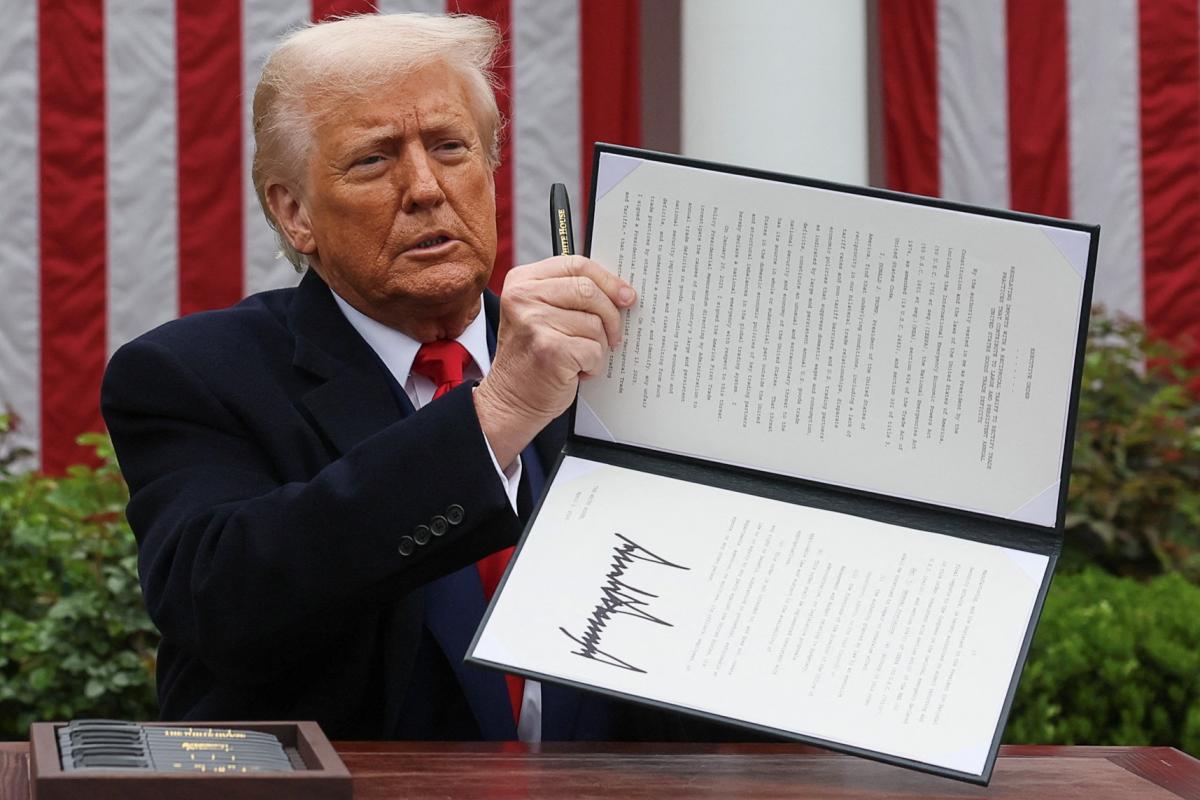The US will impose a base tariff of 10 percent on all foreign imports, with rates between 20 and 50 percent for countries judged to have major tariffs on US goods.
They including tariffs of 34% on China and 20% on the European Union.
New Zealand exports were worth about $9-billion last year, meaning theoretically New Zealand exporters will be penalised about $900 million.
A US chart says New Zealand imposes 20 percent on US imports, which is not explained given most goods from the US have low or no tariffs imposed.
It may be that New Zealand’s GST is being included as a tariff.
Trump this morning said he would impose a 10% baseline tariff on all imports to the US and higher duties on some of the country’s biggest trading partners, in a move that ratchets up a trade war that he kicked off on his return to the White House.
He said says the tariffs he’s imposing were roughly “half” of what nations with trade imbalances charge the United States in levies.
He said he was anticipating calls from country leaders looking for tariff exemptions and says his message to them is to drop their tariffs on the United States.
Kelly Eckhold, chief economist at Westpac, said it was surprising to see New Zealand listed as imposing a 20 percent tariff on the US.
“My best speculation here is that is probably a combination of the GST rate plus we do have some tariffs against the US in some products set at a minimum WTO agreed level.
“What I’m confused about is why they say Australia is 10 percent. They also have a GST, and similarly the United Kingdom is assessed at 10 as well and they have a value-added tax.”
He said it was not good news for New Zealand.
Declaration of independence
The sweeping duties are set to erect new barriers around the world’s largest consumer economy, reversing decades of trade liberalisation that have shaped the global order.
Trading partners are expected to respond with countermeasures of their own that could lead to dramatically higher prices for everything from bicycles to wine. U.S. stock futures sank following his announcement.
“It’s our declaration of independence,” Trump said at an event in the White House Rose Garden.
Trump displayed a poster that listed reciprocal tariffs, including 34% on China and 20% on the European Union, as a response to duties put on US goods.
A White House official, speaking on condition of anonymity, said those penalties would take effect on April 9 and apply to about 60 countries in all.
Canada and Mexico, the two largest US trading partners, already face 25% tariffs on many goods.
The baseline 10% tariff would take effect on Saturday (local time), the official said.
Following his remarks, Trump signed an order to remove a “de minimis” tariff exemption on low-cost products. Trump is also planning other tariffs targeting semiconductors, pharmaceuticals, and potentially critical minerals, the official said.
Trump’s barrage of penalties has rattled financial markets and businesses that have relied on trading arrangements that have been in place since the middle of last century.
The administration has said the new tariffs will take effect immediately after Trump announces them, though it has not yet published the official notice required for enforcement.
The administration, however, did publish an official notice that a separate set of tariffs on auto imports that Trump announced last week will take effect starting on April 3.
Trump has already imposed 20% duties on all imports from China and 25% duties on steel and aluminum and extended them to nearly $US150 billion worth of downstream products.
His advisers say the tariffs will return strategically vital manufacturing capabilities to the United States.
Outside economists have warned that tariffs could slow the global economy, raise the risk of recession, and increase living costs for the average U.S. family by thousands of dollars. Businesses have complained that Trump’s barrage of threats has made it difficult to plan their operations.
Tariff concerns have already slowed manufacturing activity across the globe, while also spurring sales of autos and other imported products as consumers rush to make purchases before prices rise.
Financial markets were volatile as investors awaited Trump’s announcement. US stocks have erased nearly $US5 trillion of value since February.
– RNZ/Reuters














